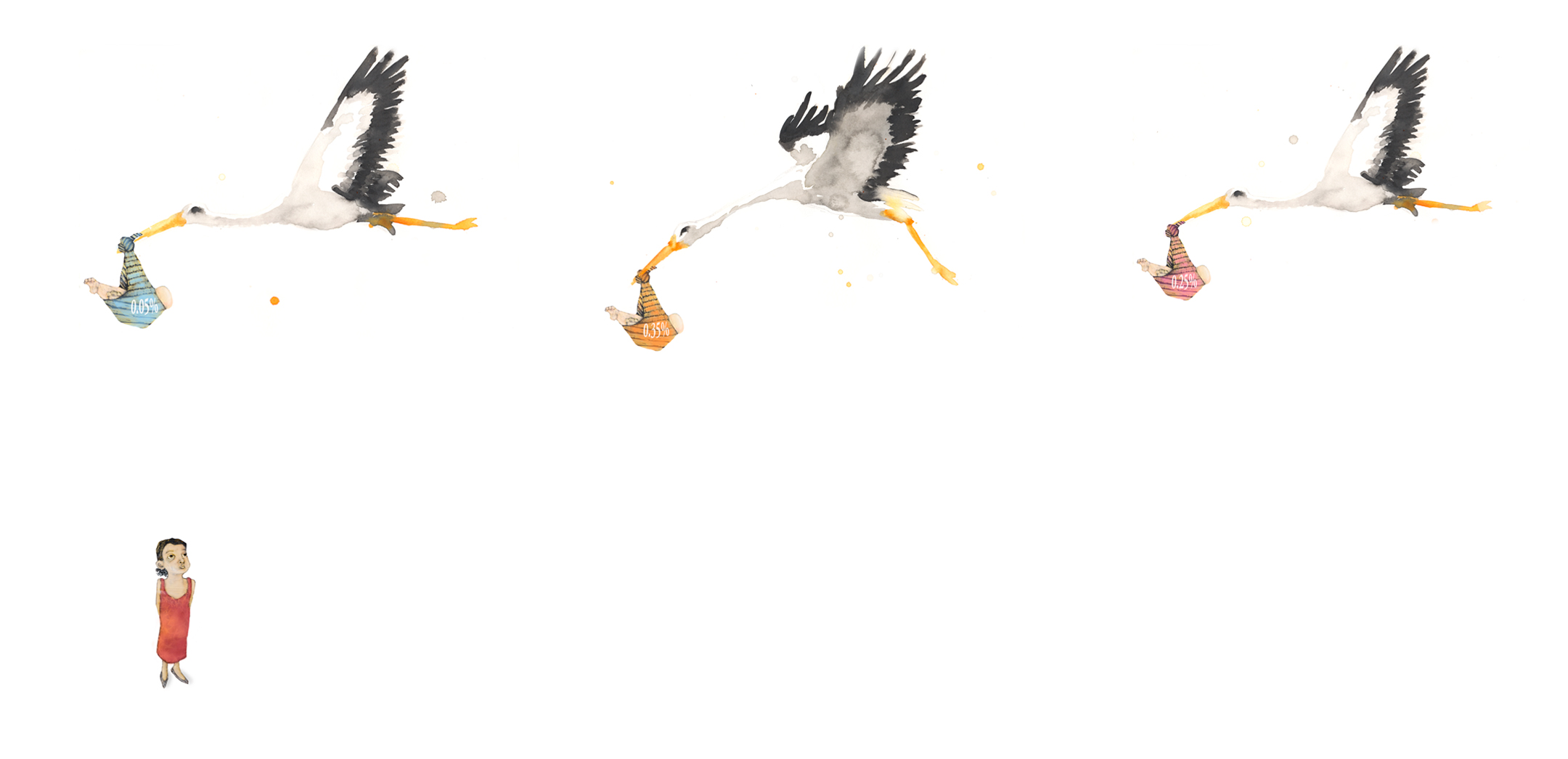
03 Aug Watching Your Figures
While wishing to be well informed about the progress of her pregnancy, Karen Collum wonders if hers was a case of too much information.
I have an application on my iPhone that gives me daily updates on the growth of my baby. I know that my baby is about the size of a peach. I know that my blood volume has increased by 30 per cent. I know that the placenta is about to take over in providing nourishment for the baby, which means my morning sickness should end soon. I soak up all of this information like a thirsty desert-dweller, in awe of the changes that are happening within me.
 More information comes via the work of the sonographer, who, at our scan, is wonderful and gives us a running commentary on what she is seeing. Our baby’s heart is beating beautifully. The stomach is present. The nasal bone is clearly evident. And the nuchal fold, that all-important fluid-filled section at the back of the baby’s neck used to assess the risk of Down syndrome, is a perfect 1.6mm. I lie back and chat with my husband and my three sons about our beautiful baby while the sonographer finishes her calculations. That’s when the experience changes from awe-inspiring to fear-inducing.
More information comes via the work of the sonographer, who, at our scan, is wonderful and gives us a running commentary on what she is seeing. Our baby’s heart is beating beautifully. The stomach is present. The nasal bone is clearly evident. And the nuchal fold, that all-important fluid-filled section at the back of the baby’s neck used to assess the risk of Down syndrome, is a perfect 1.6mm. I lie back and chat with my husband and my three sons about our beautiful baby while the sonographer finishes her calculations. That’s when the experience changes from awe-inspiring to fear-inducing.
“You are in the high-risk category for Down syndrome.”
I blink a few times, trying to process what I have just heard. High risk? All the indicators are that our baby is healthy and thriving. How can I suddenly be high-risk? And what does that mean? I force my brain to slow down, and I begin to ask questions.
I learn that for my age, the baseline risk is one in 410. That means that out of every 410 babies born to women aged 35, one will have Trisomy 21, or Down syndrome. Although our baby shows none of the physical indicators of Down syndrome, my biochemistry results put us in the high-risk category; my risk is one in 212.
It is a lot to take in, and I’m thankful for a strong background in mathematics because the numbers gradually begin to make sense. The average 35-year-old woman has approximately a 0.25 per cent chance of having a baby with Down syndrome. That means that 99.75 per cent of women aged 35 will not have a baby with Down syndrome. Although I have been assessed as having twice that risk, that still means there is only a 0.5 per cent chance that my baby has Down syndrome. There’s a 99.5 per cent chance that my baby doesn’t have it. I just wish my fear believed in statistics.
At my next scan, I’m nervous. My voice sounds shrill as I try to laugh and latch onto the excitement that dwells beneath my fear. I ignore my increasing heart rate and make small talk with the receptionist while squeezing my husband’s hand just a little too tightly. I’m hoping that today’s scan will give me further reassurance that our baby is fine. If all goes well, I’ll walk out of here with a new set of numbers to hold onto, a new statistic to chew on for the next 20 weeks.
I don’t realise that I’m holding my breath until the sonographer smiles and gives me the good news. Apart from an amniocentesis, which I decline, he can give me no guarantees, but from all appearances, our baby is fine. My new statistic is a one in 636 chance of having a baby with Down syndrome. I clutch those numbers close and begin to breathe again. I walk out of the scan with a smile on my face and the knowledge that we’re about to add a girl to our family of boys. But that tiny seed of fear that was planted eight weeks ago refuses to wither and die. It hovers around the edges of my mind like an annoying mosquito. Someone has to be that one in 636.
I experienced a long and complicated labour and delivery. Considering my previous birth experiences, we were all expecting baby number four to be a breeze. Obviously, someone forgot to tell the baby. Fifteen hours later and a whisker away from a caesarean, the beautiful Miss Hannah decided to get herself into the correct position and make her entrance. She is pink and chubby and simply divine. The tears of relief and joy mingle on my cheeks as I lock eyes with my obstetrician and ask the question that has haunted me for 28 weeks: “Does my baby have Down syndrome?”
No. No, she doesn’t. After all that stress and worry and wondering and pondering and researching and calculating and imagining what might be, our baby girl is healthy.
I hold my newborn close and stare at her for the longest of times. And as I do, I can’t help but wonder, what if I hadn’t had that scan? What if I hadn’t been given a risk ratio? What if, like my mother and grandmothers, I had carried my baby, expecting everything to be fine until proven otherwise? I couldn’t unlearn what I had learned, and although I had loved being informed throughout this miraculous process, sometimes I wished that I hadn’t known quite so much. Too much information almost stole my joy.
Illustrations by Natasja van Vlimmeren

